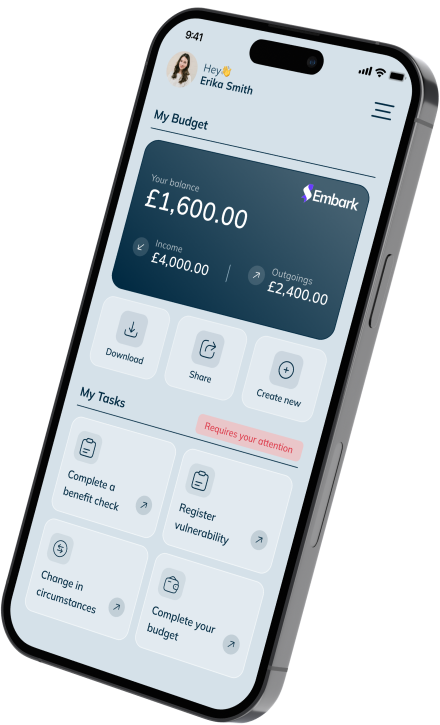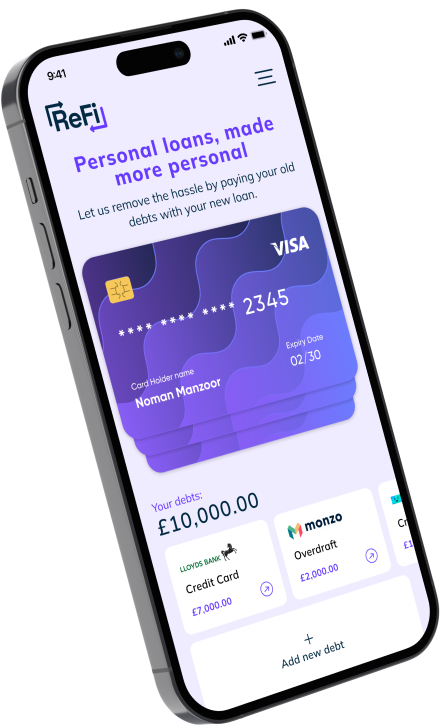In April 2025, Ofgem unveiled its refreshed Consumer Vulnerability Strategy (CVS), a framework placing the needs of vulnerable consumers at the heart of the UK’s evolving energy market. Among its key ambitions, improving the identification of vulnerability stood out as a crucial priority. Identifying vulnerability faster means protecting consumers earlier, offering them tailored support before problems escalate (Ofgem, 2025).
One tool has enormous untapped potential in this landscape: the Income and Expenditure (I&E) tool. Properly implemented, an I&E tool can revolutionise how energy companies detect, understand, and respond to financial vulnerability — transforming the current passive support models into proactive, data-driven approaches.
In this blog, we explore how I&E tools align perfectly with Ofgem’s CVS ambitions, particularly Theme 1: Improving Identification and Smarter Use of Data.
The challenge: identifying vulnerability today
Vulnerability is dynamic. Ofgem rightly notes that vulnerability isn’t static; it can arise from personal, societal, or market factors — illness, job loss, bereavement, or rising energy costs (Ofgem, 2025). Yet traditional methods of identification often rely heavily on:
- Self-disclosure – which many consumers avoid due to stigma
- Outdated data or anecdotal indicators
- Reactive processes such as waiting for missed payments
This reactive approach can delay support, risk deeper consumer harm, and could make compliance more difficult. Moreover, existing identification practices can create additional stress for consumers, who must often repeatedly explain their circumstances to different agents or companies. Inconsistent, manual processes also mean vulnerable individuals fall through the cracks.
What is an Income and Expenditure (I&E) Tool?
An I&E tool, like Paylink’s Embark platform is a structured method for capturing a customer’s financial situation: their income (wages, benefits, pensions) and their regular outgoings (housing, food, transport, debt repayments, energy bills).
Unlike ad hoc questioning, an I&E tool standardises this assessment, ensuring:
- Consistency across all customers.
- Accuracy and fairness.
- A holistic view of a person’s financial health.
Modern I&E tools can also integrate digital technologies, allowing consumers to self-complete assessments online, share banking data securely via Open Banking, connect with credit bureau data from Credit Reference Agencies or update their information easily as circumstances change.
How an I&E tool speeds up vulnerability identification
1. Proactive Data Collection
Rather than waiting for missed payments or debt build-up, an I&E tool can be offered early in a customer’s journey — for example, when they first flag payment concerns, request help, or during routine check-ins for Priority Services Register (PSR) members. (Ofgem CVS 2025).
2. Standardised, Repeatable Insights
Every customer is assessed against the same framework, removing subjectivity from vulnerability identification. Agents no longer need to “guess” based on signs — they have clear, consistent data showing financial stress indicators.
3. Tailored Vulnerability Flags
An I&E tool can trigger specific vulnerability markers (e.g., high energy-to-income ratio, recent benefit dependency), enabling companies to tailor their support accordingly — whether that’s energy advice, debt assistance, or eligibility for affordability schemes.
4. Integration with Other Systems
Linking the I&E tool with a CRM (customer relationship management) system allows for smarter segmentation. Vulnerable customers can be prioritised for specialist support teams or fast-tracked into government-backed schemes. (Ofwat PSR Data-Sharing Programme).
5. Consumer-Led Disclosure
Digital I&E tools can be self-completed, giving customers greater control over what they disclose and when. This reduces the potential embarrassment and stress sometimes felt when disclosing vulnerability to an agent directly. (ICO)
A typical journey: with and without an I&E Tool
| Without I&E Tool | With I&E Tool |
|---|---|
| Customer struggles silently with rising bills. | Customer contacted proactively based on usage or missed bill triggers. |
| Eventually defaults or self-disconnects. | Early offer to complete a quick I&E assessment. |
| Reactive repayment plans often mismatched to the ability to pay. | Repayment tailored accurately to disposable income. |
| Consumer loses trust, may disengage entirely. | Consumer feels heard, respected, and supported. |
Potential implementation challenges — and how to overcome them
Introducing an I&E tool is not without its hurdles. Companies must plan for:
- Data Protection and Consent: Customers must understand and consent to sharing financial data. Clear privacy notices and secure systems are non-negotiable (ICO UK, 2023).
- Staff Training: Agents need to use I&E outcomes empathetically, not mechanically.
- Integration Costs: Developing or procuring digital I&E solutions requires investment.
Embark has already been implemented across several high-street lenders, tier-one banks, and utility providers. At its core, Embark is designed to provide consumers with a clearer, more accurate understanding of their financial situation, along with tailored options for reducing debt or seeking further assistance.
What we can learn from other sectors
Some sectors are already leading the way in the affordability assessment market such as:
- Water companies – have successfully used I&E assessments to allocate social tariffs and support packages such as the WaterScheme.
- Debt advice – there are several organisations like PayPlan that routinely use I&E assessments to triage help, demonstrating effectiveness at scale.
- Digital innovators in financial services are testing ‘open banking’ linked affordability checks to reduce lengthy phone calls and manual data collection, Equifax.
Energy companies now have a golden opportunity to learn from these examples and accelerate their own capabilities.
What does the future hold for the energy market?
In the face of economic uncertainty, rising energy costs, and growing customer vulnerability, energy companies cannot afford to remain passive. The CVS 2025 demands a smarter, faster, and more compassionate approach. Income and Expenditure tools offer a powerful solution: identifying vulnerability earlier, building tailored support pathways, and restoring dignity to financially stressed consumers. We have a unique partnership with our partner PayPlan, who offer free debt advice. Following an affordability assessment through Paylink’s Embark platform, we have the ability to facilitate customers through to PayPlan, providing a seamless, single customer journey.








